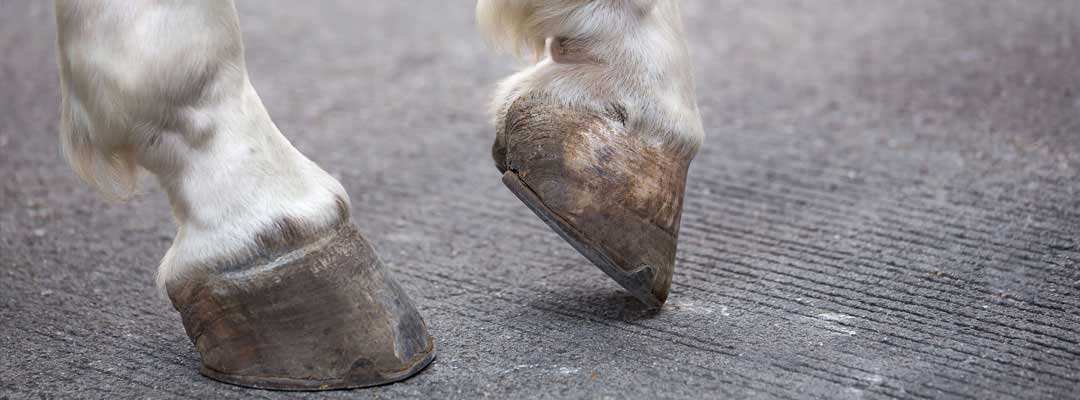FAQ: What is Navicular in Horses?
Understanding signs of navicular in horses and navicular syndrome treatment

Also referred to as navicular disease, the equine condition known as navicular syndrome results in chronic forelimb lameness, which is associated with distal sesamoid or navicular bone pain and discomfort. Often, it begins as inflammation, and when left untreated, it can have severe implications for horses.
What are Signs of Navicular in Horses?
Signs of navicular in horses can include bilateral forelimb lameness, short and choppy strides, head bob while trotting, frequent shifting of weight while standing, and pain exhibited during a hoof tester examination.
What Causes Navicular in Horses?
With the ultimate result being lameness, there can be many causes of navicular in horses -- including trauma, specific metabolic conditions, genetics, nutrition and overall hoof care.
“Proper hoof care helps address cushioning and proper biomechanics of the horse; anytime we throw that off, horses can be predisposed to conditions like navicular syndrome -- a degenerative condition of structures within the horse’s heel, often leading to chronic forelimb lameness,” explains Tony Hawkins, DVM, Technical Service Veterinarian at Valley Vet Supply.
What are Navicular Syndrome Treatment Options?
The most effective treatment is proper shoeing designed for navicular problems, non-steroidal anti-inflammatory drugs (NSAIDs), such as Equioxx, injectable bisphosphonate and supportive supplements. Therapy hoof boots also can support your horse with added comfort from the condition.
An article with University of Illinois College of Veterinary Medicine described navicular syndrome treatment in depth, stating the following.
“Among the common treatment options for navicular syndrome are:
Find supportive medication for navicular in horses at ValleyVet.com.
For more in-depth reading on this topic, peruse this informational paper published with AAEP.org.


